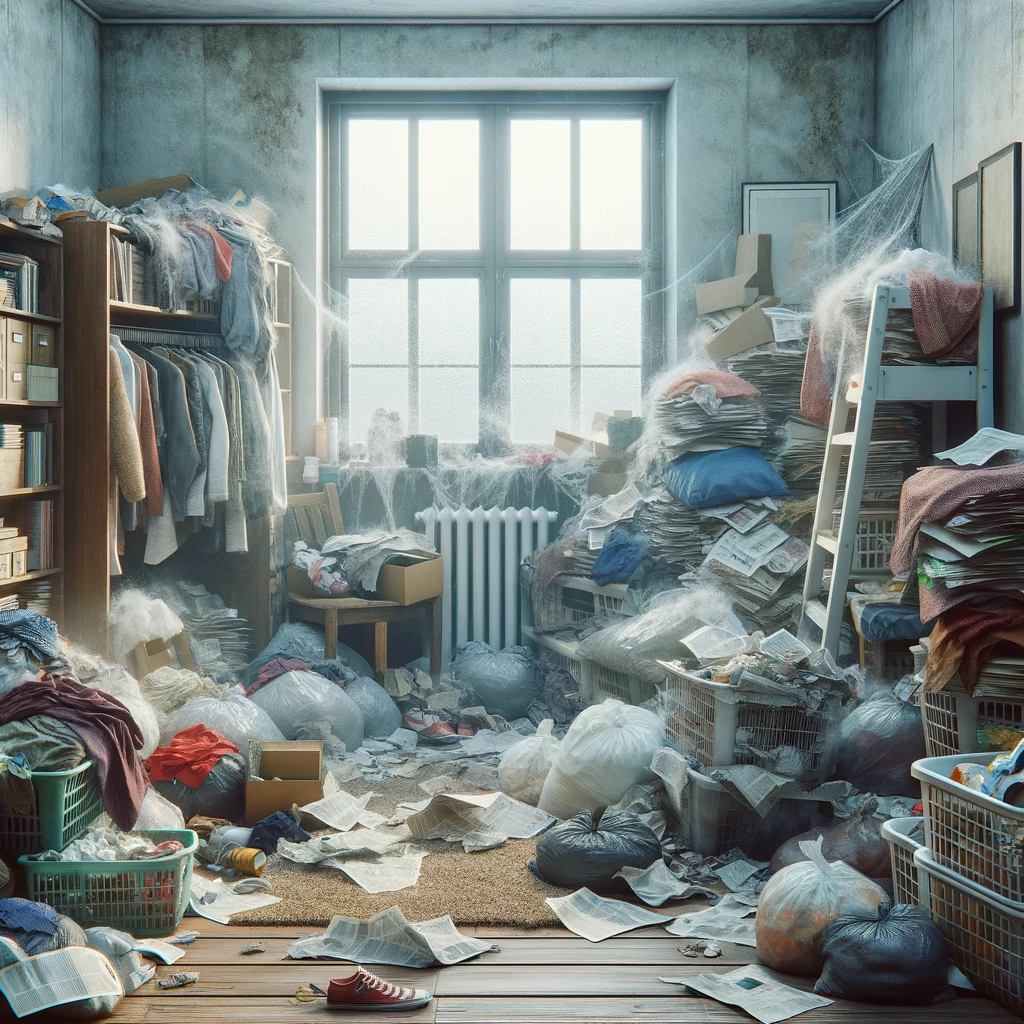Key Takeaways
-
Hoarding disorder is a recognized mental health issue characterized by difficulty discarding items, leading to clutter that hinders cleaning and promotes unsanitary conditions.
-
The severity of hoarding can vary, with advanced cases resulting in blocked exits and hazardous conditions from accumulated clutter, mildew, pests, and structural damage.
-
Professional intervention is often necessary to assist with decluttering, establishing routines, and addressing the emotional challenges involved in cleaning a hoarder’s home.
Unveiling the Reality of Hoarding Disorder and Dirtiness
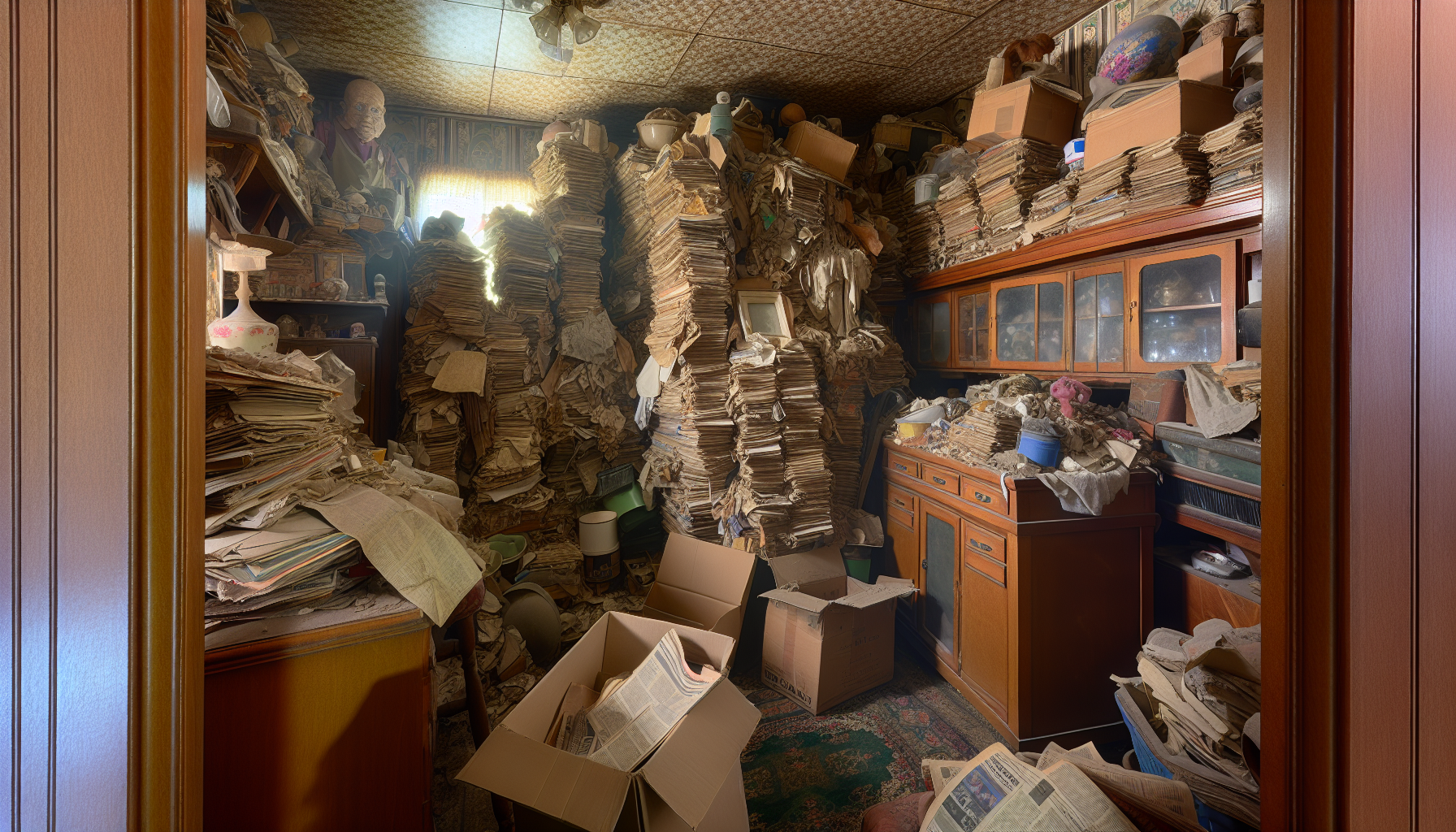
Hoarding disorder is a condition marked by the persistent difficulty in discarding possessions, leading to an extremely cramped and untidy living environment. In a hoarding case, the cluttered conditions resulting from hoarding can hinder effective cleaning, promoting unsanitary conditions and contributing to a hoarders dirty atmosphere in a hoarder’s house.
Individuals with this disorder often form strong emotional attachments to their items, regardless of their actual value. This emotional connection exacerbates the challenge in cleaning and decluttering their living spaces. Over time, this attachment and the inability to part with possessions can lead to unnoticed clutter accumulation, making many hoarders’ homes an extreme mess.
Hoarding disorder presents a complex reality. More than just minor clutter or a disordered room, it’s a condition that imposes significant hardship on the hoarder and their loved ones, transforming their homes into intricate mazes of boxes, newspapers, and seemingly worthless items.
The Psychology Behind the Piles: Mental Health and Hoarding
Hoarding is more than just an extreme form of collecting; it’s a significant mental health issue. Previously categorized under obsessive compulsive disorder (OCD), hoarding disorder is now recognized as a separate condition in the DSM-V. Many hoarders:
-
save items with no monetary value
-
experience distress when disposing of them
-
show severe OCD symptoms
-
have comorbid psychiatric disorders.
Treating hoarding disorder is a complex process. It often involves cognitive-behavioral therapy, a structured approach that includes learning skills to replace hoarding behaviors. This therapy may also include assistance from professional organizers to help navigate the piles and reclaim the hoarder’s home.
Bear in mind that clutter can adversely affect mental health issues, resulting in challenges with clear thinking and maintaining a clean living space.
The Accumulation Effect: Why Clutter Leads to Dirt Build-Up
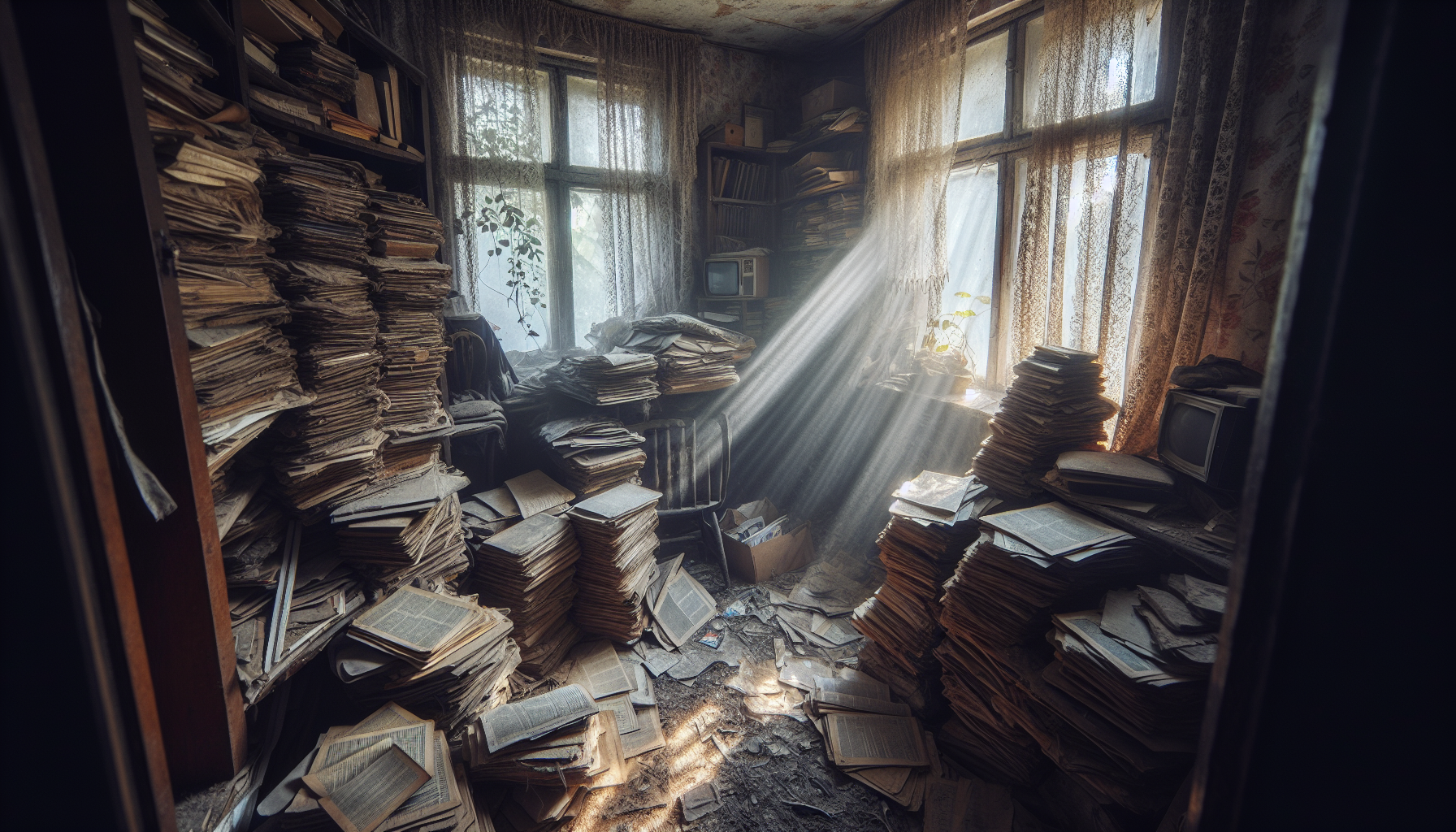
The accumulation of items in a hoarder’s home can have a snowball effect. As items pile up, regular cleaning tasks become neglected, resulting in dust accumulation and difficulty in effectively cleaning cluttered surfaces. This neglect can lead to garbage accumulation within the home, including junk mail, with items that could have been recycled or donated being thrown away due to the inconvenience of proper sorting.
Cluttered spaces tend to accumulate more dust, particularly when items such as books and fabrics are not regularly cleaned. This lack of regular cleaning routines increases exposure to allergens and can make your house feel dirty. With so much stuff lying around, the clutter also leads to health hazards such as:
-
overpowering odors from urine and feces
-
large quantities of mold and mildew
-
rotting food in the kitchen
-
infestations of various pests
These conditions result in unsafe sanitary conditions. Even seemingly harmless items, like old makeup sponges or hairspray, can pose a significant threat for bacteria growth, further contributing to the overall unsanitary conditions.
Levels of Hoarding: From Little Clutter to Severe Cases
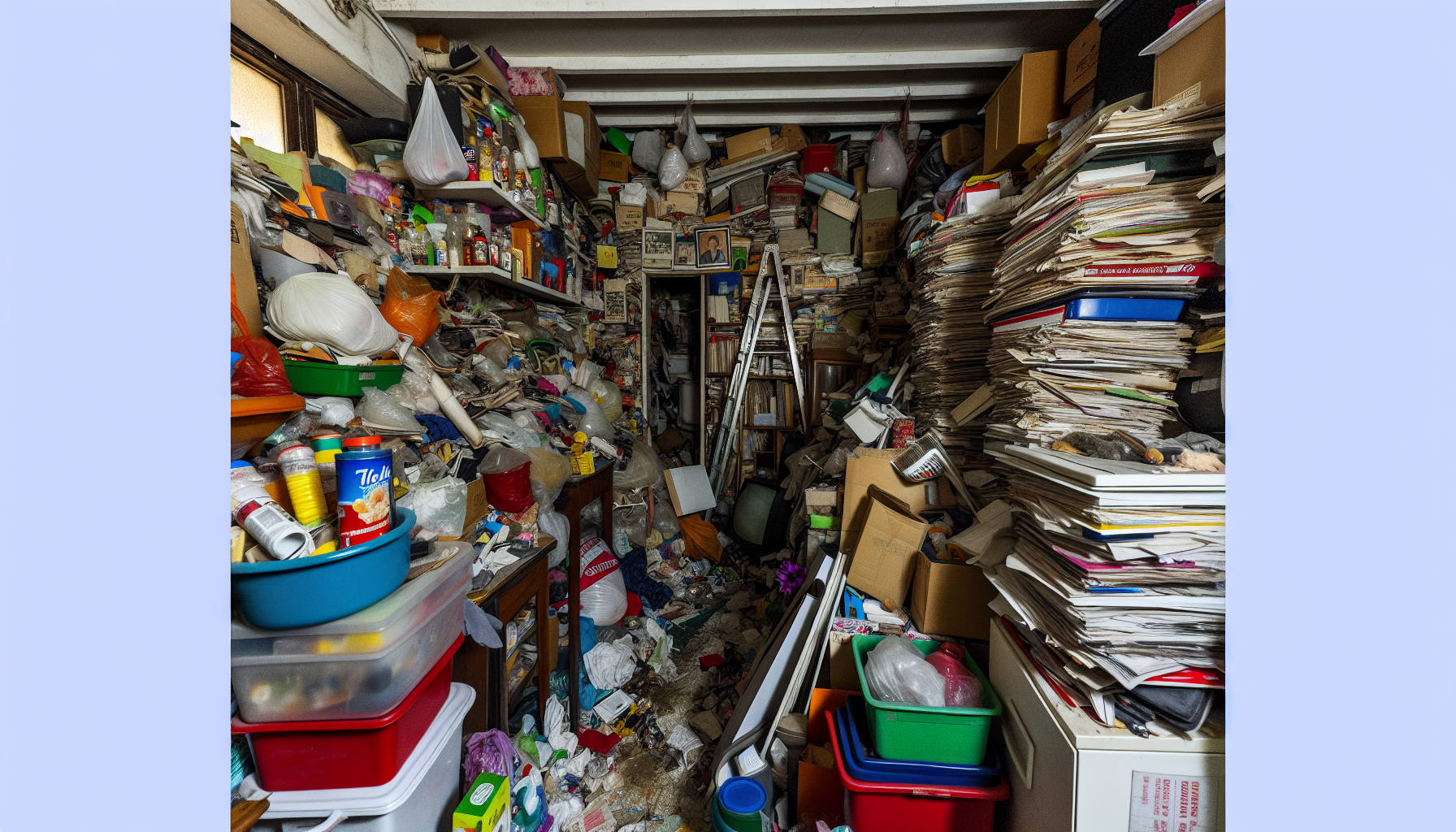
The severity of hoarding can vary greatly from one case to another, ranging from little clutter to severe instances where the hoarding significantly contributes to the overall dirtiness of a home. To accurately assess hoarding situations, professionals often use the Clutter-Hoarding Scale®, which aids in determining the necessary intervention.
We now explore the various levels of hoarding, including the impact of collected items filling living spaces.
Level 1: Mild Clutter
Level 1 hoarding is characterized by:
-
A slight amount of clutter without severe sanitation issues
-
The home is still manageable
-
Possessions are not neatly organized or displayed, indicating the beginning stages of clutter accumulation.
Despite the mild clutter, homes at this level maintain accessible doors, stairways, and windows with little to no noticeable odors, ensuring basic mobility and hygiene. However, while the living spaces may appear tidy, storage areas are typically full, suggesting the onset of accumulation behavior.
Level 2: Moderate Clutter
Level 2 hoarding is characterized by extreme messiness, including:
-
Moderate clutter where housekeeping becomes inconsistent, leading to a disorganized living environment
-
Malfunctioning ventilation due to clutter
-
Clutter in walkways
-
Excessive clutter in specific rooms
Accumulated clutter results in various odors from sources like animal waste and mildew, as upkeeping cleanliness becomes increasingly challenging. At this level, it’s clear that what may have begun as a little clutter has escalated into a more significant issue.
Level 3: Severe Clutter
Level 3 hoarding involves severe clutter. At this stage, the excessive accumulation of items often results in exits being blocked and hazardous living conditions due to poor sanitation and potential structural damage. Homes affected by level 3 hoarding often show signs of mildew, mold, sewage issues, strong odors from rotten food, and may also exhibit structural damage.
The severity of clutter in a hoarder’s home presents a serious problem, often resulting in structural damage such as broken windows, rotting floorboards, nonfunctional plumbing, and hygiene issues due to impeded access to essential facilities. At this stage, it is crucial to house properly, as the home potentially poses a danger to not just the hoarder, but also to anyone who may need to access the home.
Navigating Through the Mess: Challenges to Cleaning a Hoarder’s House
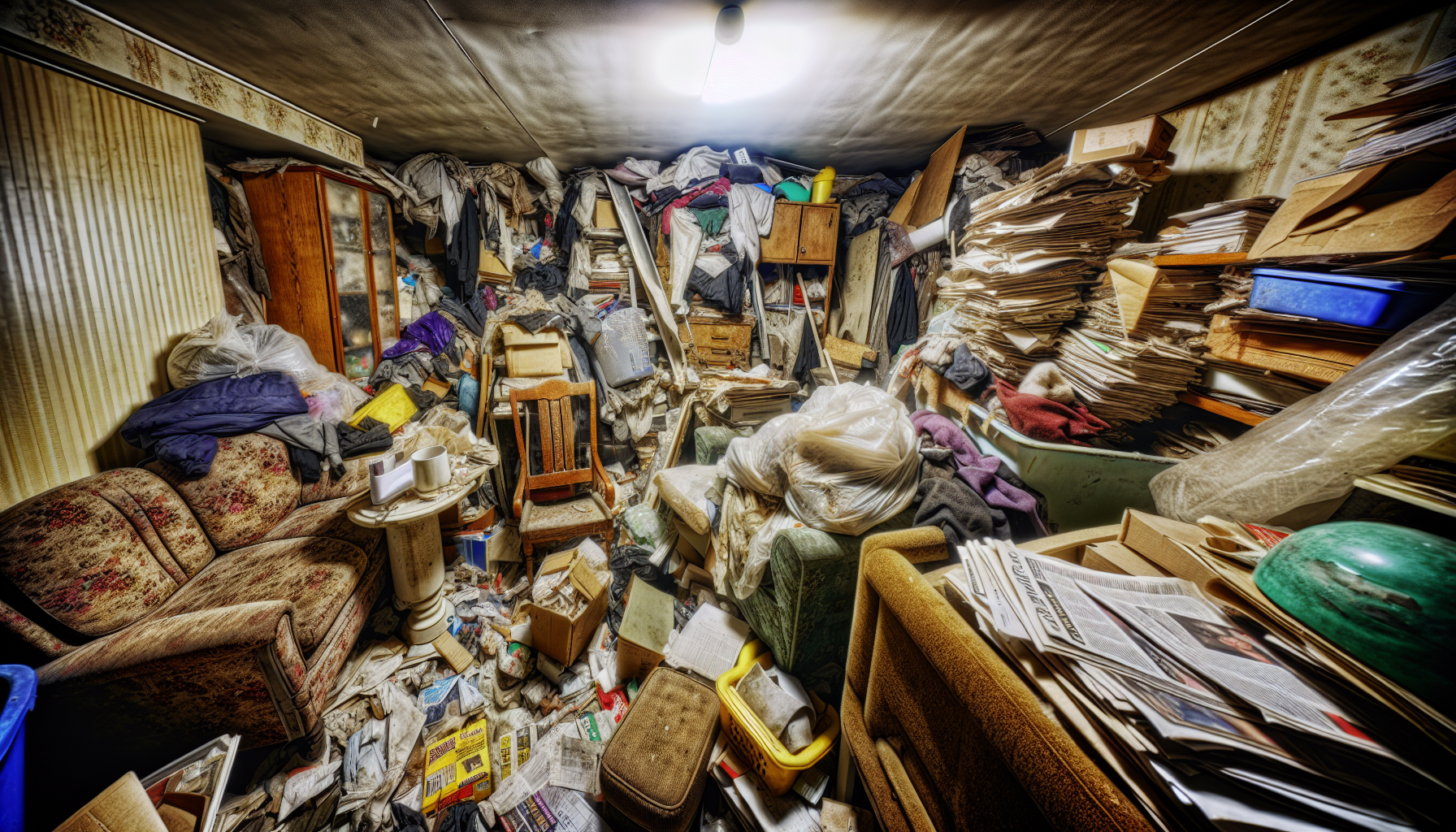
Cleaning a hoarder’s house is no walk in the park. The task is emotionally challenging because of the hoarder’s attachment to their possessions and the difficulty they face in making decisions about what to keep, discard, or donate. The deep-seated emotions tied to hoarded items can make a hoarder’s house feel like an emotional minefield, where each item holds a significant and often overwhelming emotional value.
In addition to the emotional challenges, hoarders may also suffer from anxiety, fear of loneliness, and specific phobias during the cleaning process. These emotional hurdles complicate their ability to part with items and intensify the psychological difficulty of navigating through the mess.
The Role of Professional Help: When to Call in a Professional Organizer
Given these challenges, the intervention of professional organizers often becomes crucial. These professionals are often needed when hoarders find it difficult to discard possessions or when clutter prevents the use of living spaces. They play a vital role in the hoarding cleanup process, helping to:
-
Navigate through the clutter
-
Teach effective sorting and categorization strategies
-
Establish routines
-
Teach decision-making strategies to mitigate ‘churning’ behavior
Professional organizers also:
-
Ensure a safe working environment, both emotionally and physically
-
Maintain ethical management practices
-
Encourage the categorization of items into ‘keep,’ ‘discard,’ and ‘unsure’
-
Help establish a maintained ‘home inside the home’ for each item
Note that these professionals should ideally hold specialized training from institutions like the Institute for Challenging Disorganization, enabling them to effectively manage hoarding disorder.
Health Hazards in Hoarder Homes: Recognizing the Risks
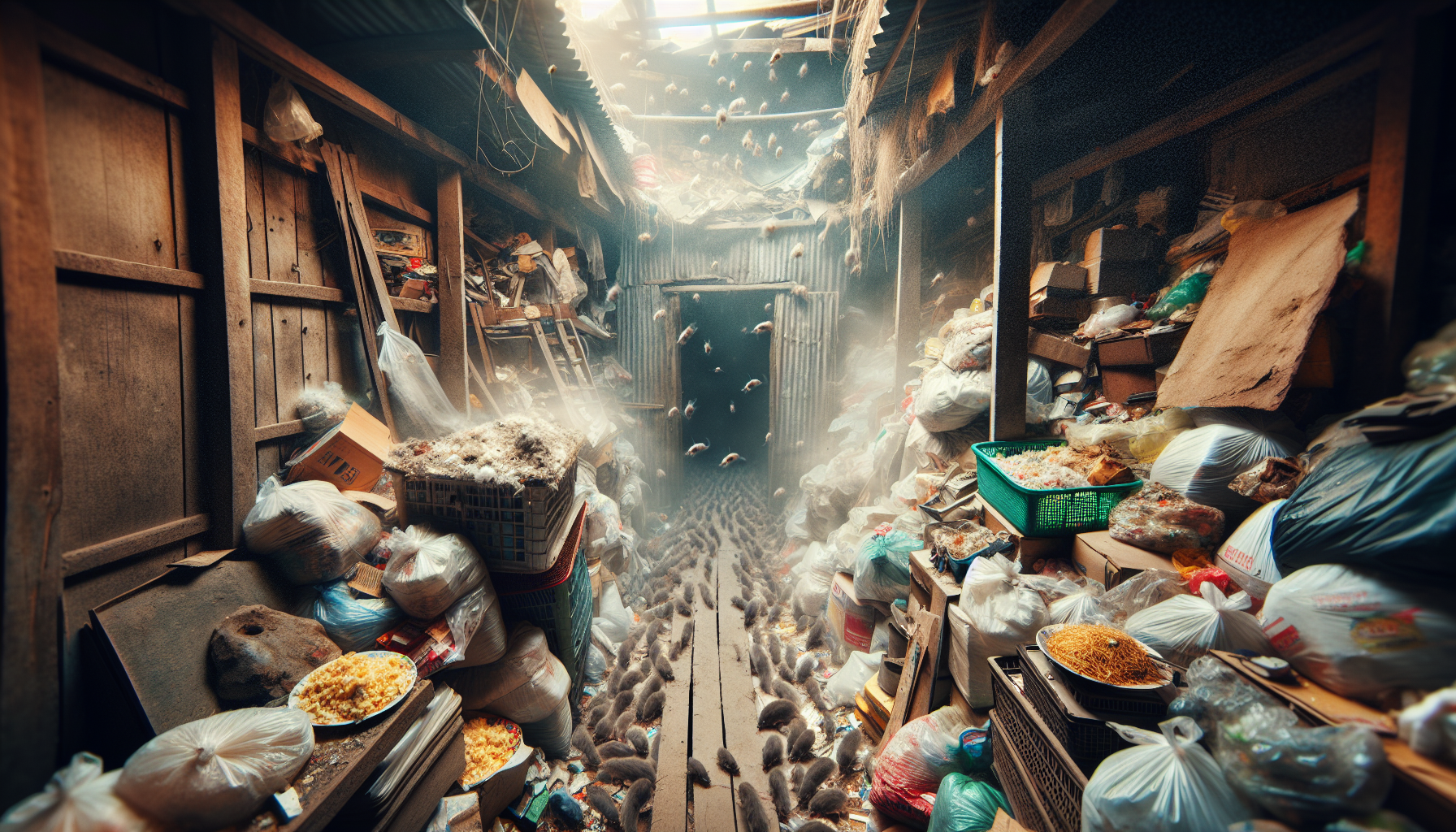
Homes affected by hoarding present a variety of health risks, including:
-
Poor indoor air quality caused by dust and debris, which can exacerbate respiratory conditions and allergies
-
Mold growth due to obstructed airflow and damp areas, which can trigger allergic reactions and respiratory problems
-
Increased risk of tripping, falls, and other accidents due to the cluttered environment, which can obstruct pathways and exits
The presence of biohazardous material such as animal waste, decaying food, and bodily fluids in homes affected by hoarding can significantly increase the risk of bacterial and viral infections. Hoarded homes often harbor pests such as mice and cockroaches, leading to unsanitary conditions and the potential spread of diseases carried by these vermin. Moreover, hazardous chemicals may be stored improperly, presenting a risk of toxic exposure, and areas like kitchens and bathrooms can become breeding grounds for bacteria such as Salmonella and E. coli.
Transforming Chaos into Control: Steps to Address Hoarding Cleanliness
The process of addressing cleanliness in a hoarding situation is multifaceted. It starts with a non-judgmental conversation focusing on safety and confidentiality, setting the stage for a cooperative and successful decluttering experience. Following this, creating a concrete action plan that includes criteria for discarding items and a clear cleaning schedule sets attainable goals for improving the living conditions.
Tackling the cleanup room-by-room and discarding items that do not meet the agreed-upon criteria helps streamline the decluttering process. A waste removal strategy ensures the progress made during cleanup doesn’t stagnate or reverse. Throughout this process, maintaining patience, positivity, and taking regular breaks are crucial elements for keeping the hoarder motivated and handling items, especially those with sentimental value, sensitively.
The ultimate aim of the clean-up process is to establish a hygienic environment by:
-
Clearing out trash
-
Removing pests
-
Dealing with biohazards
-
Disinfecting the home
Amidst the chaos, the focus on the sense of control and improved quality of life encourages continual progress, transforming a hoarder’s life from chaos to control.
Summary
In conclusion, hoarding is a complex disorder that affects both the individual and their living environment. It leads to cluttered and dirty homes, creates mental health challenges, and poses serious health risks. However, with understanding, professional help, and a concrete action plan, the chaos of hoarding can be transformed into control. It’s a journey that requires patience, empathy, and persistence, but with the right steps, it’s a journey that can lead to a cleaner, healthier, and happier life.
Frequently Asked Questions
Why do hoarders never clean?
Hoarders never clean because their mental health struggles, such as depression or anxiety, can drain their motivation to do so. As a result, the hoarded items and the overall mess in the house continue to accumulate.
Why are hoarders so disgusting?
Hoarders’ living conditions can deteriorate due to the accumulation of clutter, which can lead to a detrimental effect on their physical health and well-being, as well as those around them. This often results in a situation that is perceived as disgusting.
Why do hoarders keep feces?
Hoarders may keep feces due to feeling an attachment to it, leading to extreme hoarding that requires professional cleanup assistance.
Why do hoarders houses smell?
Hoarders’ houses smell due to the presence of unpleasant odors like urine, feces, and rotten food. This can result from the accumulation of items over time.
What is hoarding disorder?
Hoarding disorder is a condition characterized by a persistent difficulty in discarding possessions, which can result in a cluttered and untidy living environment. It can significantly impact a person’s daily life.

